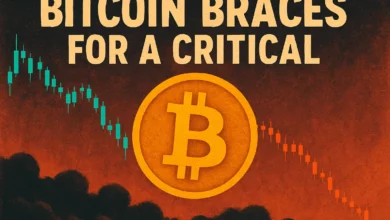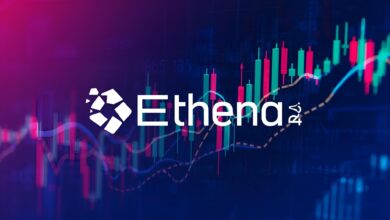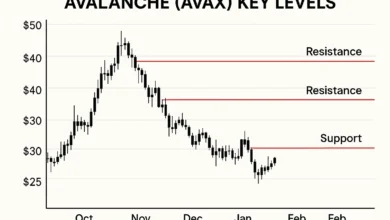Altcoin Boom Delayed as Bitcoin Leads 2025
Altcoin Boom Delayed 2025 rally is stealing the spotlight. Why the altcoin boom could be years away—and what smart investors can do now...

The Shape of the 2025 Rally: Structured, Institutional, and Bitcoin-Led
Unlike prior cycles, the current move has been institutionally scaffolded. The introduction and rapid scaling of U.S. spot Bitcoin ETFs opened the floodgates for retirement platforms, RIAs, corporate treasuries, and significant funds that had long been structurally barred from self-custody or unregulated venues. That structural shift didn’t just add demand—it changed the plumbing of liquidity. ETF flows are sticky, benchmark-aware, and often rebalanced by mandates rather than retail emotion. That has made Bitcoin the default beneficiary of the fresh money entering crypto this year. Reports throughout 2025 showed repeated waves of ETF inflows—some topping $1 billion in a single day—underscoring that Wall Street rails are now a primary driver of crypto capital formation.
At the issuer level, the market’s gravitational pull is even clearer. BlackRock’s IBIT has approached the rarefied territory of mega-cap ETFs by assets under management, a milestone that signals just how mainstream “digital gold” has become for diversified portfolios. When one ETF rivals entire sectors in scale, the message is simple: allocators view Bitcoin as the flagship exposure to the asset class, not merely a risk-on side bet. That scale alone reshapes dominance dynamics and delays broad rotation, as the deepest and most accessible liquidity resides in BTC.
What Bitget Is Actually Saying About Altcoins—and Why It Matters
Bitget’s leadership has drawn a nuanced picture. On the one hand, Bitget CEO Gracy Chen has outlined a path for Bitcoin to reach ambitious levels in 2025, highlighting both upside potential and the likelihood of sharp volatility along the way. On the other hand, Bitget’s operating chief, Vugar Usi Zade, has argued that—absent new, exciting catalysts—there’s no compelling basis to expect a sweeping altcoin season in the current cycle. Taken together, the message is not anti-altcoin; it’s a timing caution: Bitcoin-first, altcoins later, and only once genuine product-market fit or breakthrough narratives appear in size.

This perspective aligns with broader research that points to selective gains rather than a tide that lifts every token. Several market reports in 2025 have suggested that while some sectors—such as DePIN, modular scaling, restaking, or real-world assets (RWA)—could produce standout winners, a generalized altcoin boom is less likely without a clear macro catalyst and sustained risk appetite beyond Bitcoin. In other words, we may be in an era of targeted rotation rather than indiscriminate euphoria.
Why Bitcoin Keeps Soaking Up the Oxygen in the Room
ETF Railways Have Rewired Capital Inflows
The most powerful tailwind of this cycle is ETF infrastructure. By enabling exposure within brokerage accounts and retirement wrappers, ETFs bypass operational hurdles that previously kept conservative capital on the sidelines. Because these vehicles hold Bitcoin specifically, they concentrate demand in BTC by design. Each rebalancing event, each inflow day, and each model portfolio inclusion funnels incremental dollars into Bitcoin first. As long as that pipeline remains active, dominance will remain elevated.
Regulatory Clarity Favors the Benchmark
Regulators across key jurisdictions have spent years disentangling commodity-like Bitcoin from the more complex and often security-adjacent perception of many altcoins. Regardless of one’s view of those categorizations, the practical effect has been to position Bitcoin as the lowest-friction, highest-clarity exposure for institutions. Compliance officers love clarity, and clarity channels capital. In that environment, Bitcoin dominates until altcoins achieve regulatory comfort similar to Bitcoin’s, or until new structures arise that package altcoin exposure with the same simplicity and oversight.
Liquidity Depth and Narrative Coherence
Liquidity begets liquidity. Bitcoin’s order book depth, futures open interest, and options market breadth create a feedback loop that allows large players to deploy and hedge at scale. Meanwhile, its narrative coherence—digital gold, post-halving scarcity, macro hedge—remains legible to non-crypto investors. Altcoins, by contrast, often require protocol-specific narratives. Without new killer apps or adoption curves, broad-based rotation struggles to sustain.
“Altcoin Season” Isn’t a Law of Nature—It’s a Liquidity Outcome
The phrase altcoin season implies an almost cyclical inevitability: Bitcoin rallies, dominance peaks, profits rotate to Ethereum, Solana, and then down the market-cap ladder. Historically, this has happened during periods when retail speculation swelled, venture unlocks were less restrictive, and new primitives drew in new users. But cycles are not symmetrical. The ETF moment has, at least temporarily, shifted the curve’s slope. Until outperformance in real usage, fees, or innovation provides an apparent reason to rotate, allocators can stay in BTC and still capture the bulk of the upside, with better liquidity and perceived safety.
Bitget’s recent messaging—that there’s “no logical reason” to expect a sweeping altcoin wave without genuine catalysts—distills this reality. It doesn’t claim altcoins can’t rally; it claims that macro structure and narrative scarcity delay the move. That’s a sober view in a market that often prefers hope to hard truths.
The Metrics Behind Bitcoin’s Dominance in 2025
Persistent ETF Inflows
Multiple reporting periods this year have recorded robust net inflows into spot Bitcoin ETFs, with some sessions exceeding the billion-dollar mark and multi-day streaks stacking billions in net demand. This steady accumulation underpins price resilience and narrows the window for altcoins to steal the spotlight absent headline-grabbing breakthroughs of their own.
AUM Concentration in Flagship Products
With IBIT racing toward triple-digit billions in AUM, the concentration of passive and quasi-passive flows in a single Bitcoin vehicle is unprecedented for crypto. That concentration reshapes everything from volatility regimes to cross-asset correlations within the crypto complex. When the benchmark earns the lion’s share of capital, the altcoin beta to BTC becomes more fragile and uneven.
“Dominance” as a Structural, Not Just Cyclical, Indicator
Although traders treat BTC.D (Bitcoin dominance) as a cyclical gauge, the presence of ETFs, rising corporate treasuries holding BTC, and macro hedging use-cases suggest a structural floor for Bitcoin’s market share. Understanding the metric helps frame expectations: even if BTC dominance retreats during a speculative phase, the long-run baseline may be higher than in past cycles, compressing the time and magnitude of altcoin surges.
What Could Actually Trigger the Next Altcoin Boom?

A Killer App Surge That Becomes a Household Use Case
The fastest route to a real altcoin boom is obvious but hard: breakout adoption. If a non-custodial payments network, a mainstream RWA platform, or decentralized AI stack crosses the chasm from crypto-native users to mass-market participants, capital will flow to the execution layer and adjacent ecosystems. Traders should watch for organic fees, daily active users, and retention that aren’t driven solely by incentives.
Policy Catalysts That Reduce Friction
A shift toward clear, harmonized regulation for tokens beyond Bitcoin—especially in the U.S.—could unlock a new wave of institutional altcoin products. The moment large brokerages can offer baskets of vetted L1s/L2s or sector ETFs with compliant disclosures, the access problem shrinks, and with it the dominance premium that Bitcoin currently enjoys.
Stable Liquidity and Falling Real Yields
A macro regime of falling real rates, narrower credit spreads, and stable dollar liquidity historically correlates with risk-on behavior further down the cap spectrum. If global liquidity indicators and central bank posture turn decisively friendlier, a rotation window opens.
Strategy: How to Invest if the Altcoin Boom Is Delayed
Keep Bitcoin as the Core Allocation
In a market where BTC is structurally advantaged, treating it as the core holding makes both tactical and strategic sense. Dollar-cost averaging through qualified wrappers—where available—keeps slippage low and taxes predictable. Given Bitget’s leadership commentary on both upside potential and volatility, position sizing should reflect the reality that drawdowns can still be swift even in a bull cycle.
Use a Barbell for Select Altcoin Exposure
Instead of blanket exposure across dozens of small caps, a barbell approach can balance asymmetry and survivability. On one end, consider high-conviction majors with robust developer ecosystems and clear roadmaps. On the other hand, reserve a small sleeve for emerging narratives—for example, modular data availability, DePIN, or restaking—while demanding on-chain traction and verifiable usage. This approach aligns with research suggesting targeted gains rather than a market-wide melt-up.
Let the Metrics, Not the Memes, Dictate Rotation
If and when rotation starts, the market will usually telegraph it: falling BTC.D, expanding spot volumes in majors ex-BTC, rising on-chain fees outside Bitcoin, and persistent relative strength in altcoin indices. Waiting for data-driven confirmation reduces FOMO-driven mistakes. Equally important is understanding liquidity realities: smaller caps move fast on the way up—and faster on the way down. A rules-based risk plan that caps single-position exposure and defines stop-loss or time-based exits can turn an altcoin moonshot from a coin flip into a process.
Counterpoint: Could We Still Get a Surprise Altseason?
Markets surface second-order effects that models miss. A surprise EVM breakthrough, viral consumer apps with crypto under the hood, or a policy swing that unlocks altcoin ETFs could compress timelines dramatically. ETF providers, for their part, are highly motivated to expand their product menus. If custody, valuation, and disclosure hurdles are solved for a basket of non-Bitcoin assets, the access advantage that BTC enjoys could start to normalize. In such a case, altcoins could experience reflexive flows similar to Bitcoin’s current ETF-driven impulse—albeit likely with higher volatility bands.
Reading Bitget’s Message Correctly
It’s tempting to interpret Bitget’s stance as a bearish view of everything outside Bitcoin. That’s not the right read. Bitget’s CEO has repeatedly outlined constructive scenarios for crypto’s flagship and highlighted the market’s cyclical nature. At the same time, other Bitget leaders have injected a healthy dose of skepticism about the idea that a broad altcoin rally is imminent without genuine catalysts. The practical takeaway is patience and selectivity: participate in Bitcoin’s structural bid today, and prepare to pounce on altcoin opportunities when the data says the time is right.
The Path From Dominance to Diffusion
History shows that dominance trends are powerful but not permanent. Innovations migrate, narratives evolve, and liquidity eventually seeks beta when confidence runs high. The question is when, not if, altcoins reclaim a measurable share of attention. If 2025 remains a Bitcoin-first year—powered by ETF flows, macro tailwinds, and institutional adoption—the most credible roadmap for the altcoin boom likely slips into later cycles or at least later in this cycle. Under that assumption, investors can build an edge by following usage, unit economics, and regulatory developments, rather than hoping for a calendar-based “altseason.”
Meanwhile, Bitcoin’s institutionalization deepens. Each new record in ETF AUM, every additional gatekeeper that adds BTC to a model portfolio, and each compliance green light increases the opportunity cost of straying too far down the risk curve. That doesn’t eliminate altcoin upside; it raises the bar for entry. Projects that clear that bar—demonstrating utility, revenue, and retention—will be the ones to lead any eventual altcoin boom worth the name.
Conclusion
The altcoin boom isn’t canceled; it’s contingent. In 2025, Bitcoin dominates because structural flows, regulatory clarity, and liquidity depth all point in the same direction. Bitget’s leadership has effectively captured the mood: constructive on Bitcoin, demanding on altcoins. For investors, that means embracing BTC as the core engine of exposure while remaining nimble, data-driven, and selective in altcoins. If and when the macro, policy, and product catalysts align, rotation will arrive—and it will reward those who prepared with process, not hope.
FAQs
Q: Did Bitget actually say the altcoin boom is years away?
Bitget’s executives have warned there’s no strong catalyst for a sweeping altcoin season right now, emphasizing caution on timing. Meanwhile, Bitget’s CEO has outlined optimistic scenarios for Bitcoin in 2025. Read together, the message is Bitcoin-first now, selective altcoin exposure later, unless new catalysts emerge.
Q: If Bitcoin leads, does that mean altcoins can’t rally in 2025?
Not necessarily. Specific sectors could still produce targeted winners, especially where real usage and fees grow. The difference in 2025 is that ETF-driven flows and institutional railways make a broad, indiscriminate altcoin melt-up less likely without breakthroughs.
Q: What signals would suggest an altcoin season is starting?
Watch for a sustained drop in BTC dominance, rising spot volumes and on-chain fees outside Bitcoin, and multi-week relative strength of major altcoin indices versus BTC. These are data-driven signs of capital rotation rather than short squeezes.
Q: Why are ETFs such a big deal for Bitcoin’s dominance?
Spot Bitcoin ETFs channel large, regulated pools of capital into BTC specifically, often on a model-driven basis. That creates consistent buy pressure and deep liquidity in Bitcoin first, which can delay broad rotation. Several 2025 stretches documented multi-day billion-dollar flows into these funds.
Q: What portfolios make sense while waiting for altcoin catalysts?
A pragmatic framework is Bitcoin as core, surrounded by disciplined, selective altcoin positions in ecosystems or sectors showing real traction. Position-sizing and risk controls matter more than ever, because volatility remains high even in bull phases, as Bitget’s leadership has noted.
Also More: Ethereum Hits $4000 Top 5 Altcoins to Buy Now (ADA, LINK & amp More)









